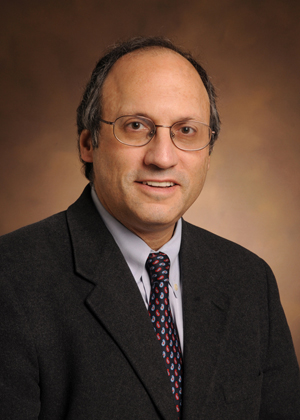
Investigators at Vanderbilt-Ingram Cancer Center and several other centers may be one step closer to finding out why some melanoma patients relapse after treatment with a promising new drug.
Approximately half of all patients with the most deadly form of skin cancer have a mutation in the BRAF gene in their tumors that drives the growth of their cancer.
The discovery of this altered molecular pathway in cells led to the development of the new drug vemurafenib, which blocks the pathway.
Melanoma patients with the BRAF mutation who are treated with vemurafenib live significantly longer than patients on conventional treatments and derive a striking clinical benefit.
“[rquote]This new drug doesn’t just extend life, it gives our patients a new lease on life,” said Jeffrey Sosman, professor of medicine and director of the Vanderbilt Melanoma Program.[/rquote]
“The sad thing is all of these patients eventually relapse, so this has just been a roller coaster for patients and their families.”
Now, researchers have found clues to the mystery of what is causing resistance to the BRAF-inhibitor drug and have suggested new targets for treatment.
Sosman, Mark Kelley, associate professor of surgery, and Kimberly Dahlman, research instructor in cancer biology, are among the co-authors on the paper published last month in Nature.
The investigators exposed BRAF-mutant cell lines to increasing doses of vemurafenib until some of the cell lines developed resistance to the drug.
Then they analyzed the DNA from the resistant cell lines, as well as DNA from tumors of patients who had developed resistance to the anti-BRAF drug.
“We found that certain resistant cells create a different form of BRAF that is shorter,” explained Sosman. “The fact that it’s smaller means that it has lost a portion of the protein which allows it to couple with itself, and by coupling it can activate the pathway.
“In fact, the drug may enhance the activation so what you’ve done is give the cell another way to activate the pathway even in the presence of the drug.”

Why the protein is spliced differently is still unknown.
“This is a unique mechanism and it was present in about 30 percent of the samples we studied,” said Sosman.
Other recent melanoma research has found additional alternate pathways around the mutated BRAF gene, which means that the cancer can be reactivated by several different mechanisms.
Sosman said there may be multiple mechanisms in different sites within the same patient that can find a way around anti-BRAF drugs.
“So how do you treat in this situation? You can’t give the patient dozens of drugs so there has to be a way to prevent this from developing,” Sosman explained.
VICC investigators are collaborating with other cancer researchers on new studies aimed at finding treatments that give patients with metastatic melanoma a more durable response.












